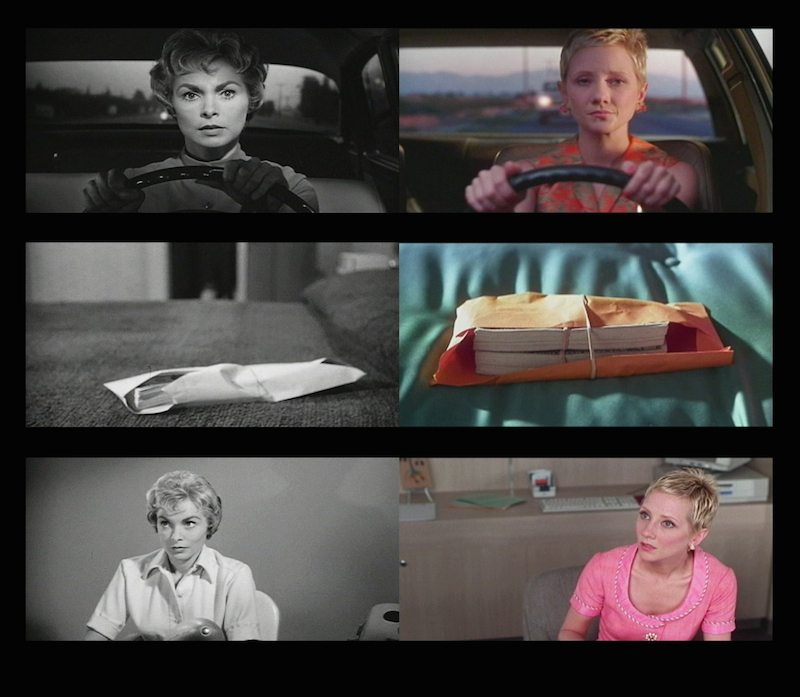
Andrew Neumann. Still from Double: Psycho, 2008. Single-channel video projection; duration varies. Courtesy the artist.
When it comes to embracing the new, the art market tends to move at a glacial pace. However, last Fall Phillips Auction House, in connection with the photo sharing site Tumblr, hosted the world’s first digital media auction, “Paddles On!”, a move which indicated an increased comfort in selling intangible objects. Twenty works were selected by curator Lindsay Howard of 319 Scholes. They ranged from animated GIFs and video game screen caps to an eight hour durational performance video, INBOX FULL, where artist Molly Soda read aloud an opus of unread messages received from strangers in her Tumblr inbox. Media you might have expected for free online went for a combined $90,600 at auction.
Artist Rafaël Rozendaal, a participant of Paddles On!, sold his website www.ifnoyes.com for $3,500. A New York City-based artist, Rozendaal has been experimenting with online art forms for over ten years. The son of two fine artists, his early introduction to the art world was through painting and printmaking. His visual language remains rooted in painting traditions, but the allure of the Web was something he could not ignore.
“I love the Web because my words are instantly all over the world. It affords me a certain degree of independence since I don’t have to rely on anyone’s permission to show my art. Instead of having one solo show a year where the critics either love you or hate you, you are constantly creating and showing your work in front of an audience of millions.”

Rafaël Rozendaal. www.ifnoyes.com, 2013. Dimensions variable; duration infinite. Collection of Benjamin Palmer & Elizabeth Valleau. Courtesy the artist.
Although artists like Rozendaal are venturing out on their own, digital media relies on a network and the support of risk-loving galleries, museums, and institutions to ensure the medium’s viability. George Fifield, the founder and director of Boston Cyberarts, has been a champion of digital media for decades. In 1993, he curated The Computer Is Not Sorry, the very first computer installation show at The Space gallery in Boston.
George has vast experience in the field and uses it to support new media artists, and assist them in navigating the difficult and murky waters surrounding buying and selling artwork created in and for the digital realm.
“There are so many issues to consider. One thing I always insisted when I worked at museums (and even when I choose work for my own personal collection) is that I’m not buying the CD/DVD, I’m buying the code on it, so if that DVD breaks or doesn’t work the artist is going to give me that code in another form. That’s really critical. It’s not just the physical manifestation of what I’m buying, I’m buying the code itself.”

Mark Skwarek and Joseph Hocking. Children of Arcadia, 2008. Featured at the 2009 Boston Cyberarts Festival. © 2008 Mark Skwarek
For buyers of digital work, there are additional stipulations and responsibilities surrounding the purchase. New media contracts often outline the rights and duties of the artist and collector to ensure the work remains intact and functional for as long as possible. This may include annually renewing a domain, exhibiting the work on approved technologies, and allowing it to remain publicly accessible.
Potential art buyers might find this last point a tough pill to swallow. For Rozendaal, it is simply not negotiable. The artist requires that his websites, which see upwards of forty million visitors a year, remain online so that they can be viewed and enjoyed by all. His hope is to democratize the art market.
“Once a collector realizes that my website isn’t in one place and they can have it on their phone, laptop, or in their pocket at a dinner party, it becomes a different kind of trophy since it’s always with you. All of a sudden they understand the benefit of it being…everywhere instead of existing only on their living room wall.”

Rafaël Rozendaal. www.muchbetterthanthis.com installed at Stedelijk/11, 2006. Dimensions variable; duration infinite. Photo: Marc Kniphorst. Courtesy the artist.
The dynamic nature of online artwork is certainly a shift for those who are accustomed to purchasing tangible art objects and keeping them under lock and key. Digital media redefines our perceptions of ownership. It’s less about control and possession and more about sharing and accessibility.




Pingback: Weekly Wrap-Up for May 9th, 2014 | FLUX.
Pingback: Intangible Possessions | FLUX.